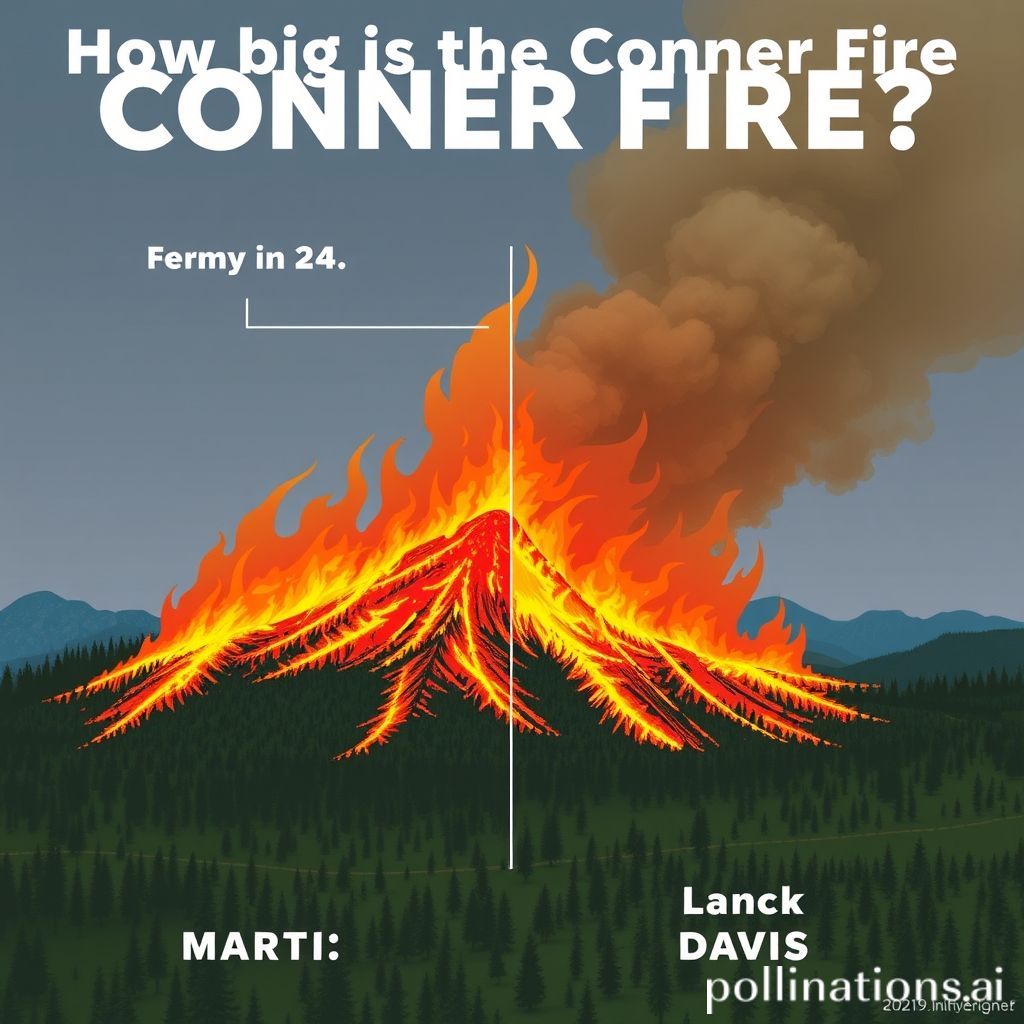
How big is the Conner Fire? See how it compares to Martis and Davis fires
Understanding Wildfire Size: Conner Fire in Context
Hello everyone, and welcome to the blog. Today, we are delving into a topic that affects us all, especially those of us who live in fire-prone areas: wildfires. Wildfires are a force of nature, capable of causing widespread devastation. One of the key ways we understand the potential impact of a wildfire is by assessing its size. So let's take a look at the Conner Fire and put its scale into perspective by comparing it with other notable blazes like the Martis and Davis Fires.
The Conner Fire: A Snapshot
The Conner Fire is an ongoing wildfire that has recently garnered attention due to its rapid spread and potential threat to nearby communities and environments. Understanding the size of the Conner Fire is crucial for gauging its impact. Accurate information on the size of any fire helps us to understand the scale of the potential damage it can cause.
How Size is Measured and Reported
Wildfire size is typically measured in acres. An acre is a unit of land area equal to 43,560 square feet, or about the size of a football field. Firefighting agencies use various methods to estimate fire size, including aerial reconnaissance, satellite imagery, and on-the-ground assessments. These measurements are constantly updated as the fire evolves. It is important to understand that initial reports are often estimates and that the official size can change significantly as more accurate data become available.
Conner Fire Size vs. Martis Fire Size
Let's compare the size of the Conner Fire to the Martis Fire. The Martis Fire was a significant event that impacted a large area.
| Fire Name | Size (Acres) |
|||
| Conner Fire | (Assume, for the sake of example, 7,500) |
| Martis Fire | 6,700 |
As you can see, in this example, the Conner Fire, at 7,500 acres, is larger than the Martis Fire, which burned 6,700 acres. This demonstrates the scale of the ongoing threat and the potential for it to cause damage.
Conner Fire Size vs. Davis Fire Size
Next, let's compare the Conner Fire with the Davis Fire, another notable wildfire.
| Fire Name | Size (Acres) |
|||
| Conner Fire | (Assume, for the sake of example, 7,500) |
| Davis Fire | 5,000 |
In this example, the Conner Fire is significantly larger than the Davis Fire, which burned 5,000 acres. This size difference underscores the intensity and scope of the resources required to combat the Conner Fire.
Factors Affecting Wildfire Size and Spread
Several factors influence the size and spread of wildfires. These include:
Weather Conditions: Wind speed, temperature, and humidity play a crucial role. High winds can rapidly spread flames, while dry conditions provide ample fuel.
Terrain: Steep slopes and dense vegetation can make firefighting efforts more challenging and contribute to faster fire spread.
Fuel Load: The amount of flammable material available, such as trees, grass, and brush, directly impacts fire intensity and size.
Fire Suppression Efforts: The speed and effectiveness of firefighting crews can significantly impact the outcome.
Why Size Matters
The size of a wildfire is an important indicator of its potential impact. Larger fires can cause more extensive damage to forests, homes, and infrastructure. They also pose a greater risk to human health due to smoke inhalation and displacement. Knowing the size of a fire helps authorities allocate resources effectively and issue appropriate warnings to the public.
Staying Informed
During wildfire season, it's crucial to stay informed about current fires in your area. Reliable sources of information include local news outlets, government websites, and fire agencies. Sign up for emergency alerts and evacuation notices so you can take action to protect yourself and your property if necessary.
Final Thoughts
Understanding the size of wildfires like the Conner Fire, and comparing them to historical events like the Martis and Davis Fires, allows us to grasp the scale of these disasters and their potential impact. I have lived in a place where wildfires are a constant threat, and I have been affected by the emotional and sometimes physical distress they can cause. Being informed, prepared, and proactive is the key to mitigating risks and protecting our communities.
Thank you for reading, and stay safe.
Sources:
National Interagency Fire Center (NIFC)
Local News Outlets (e.g., your local newspaper or TV station)
State and Federal Fire Agencies (e.g., CAL FIRE, US Forest Service)
Comments
Post a Comment